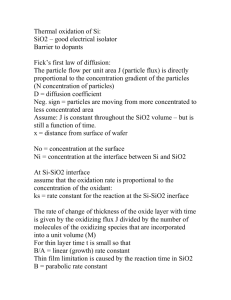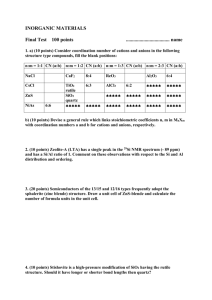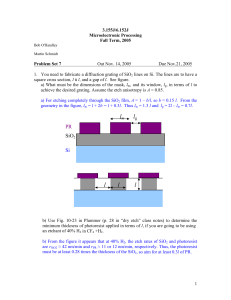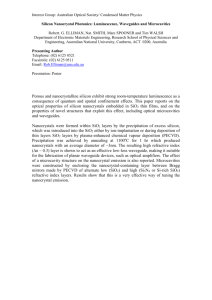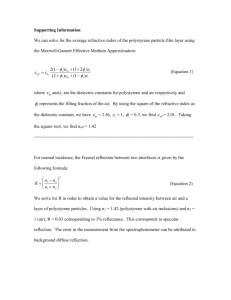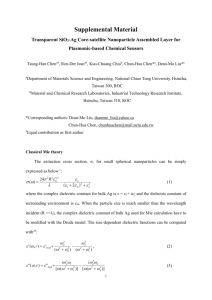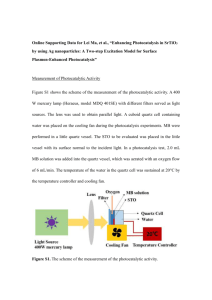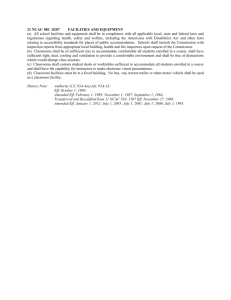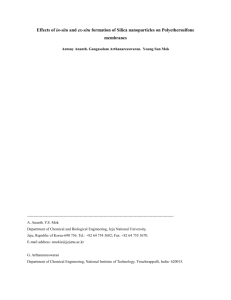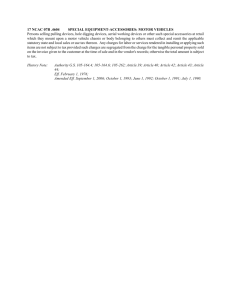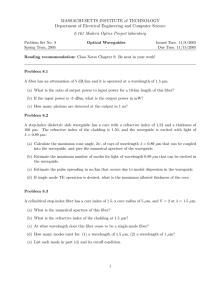Single pass gain data at various wavelengths are reported in fig
advertisement
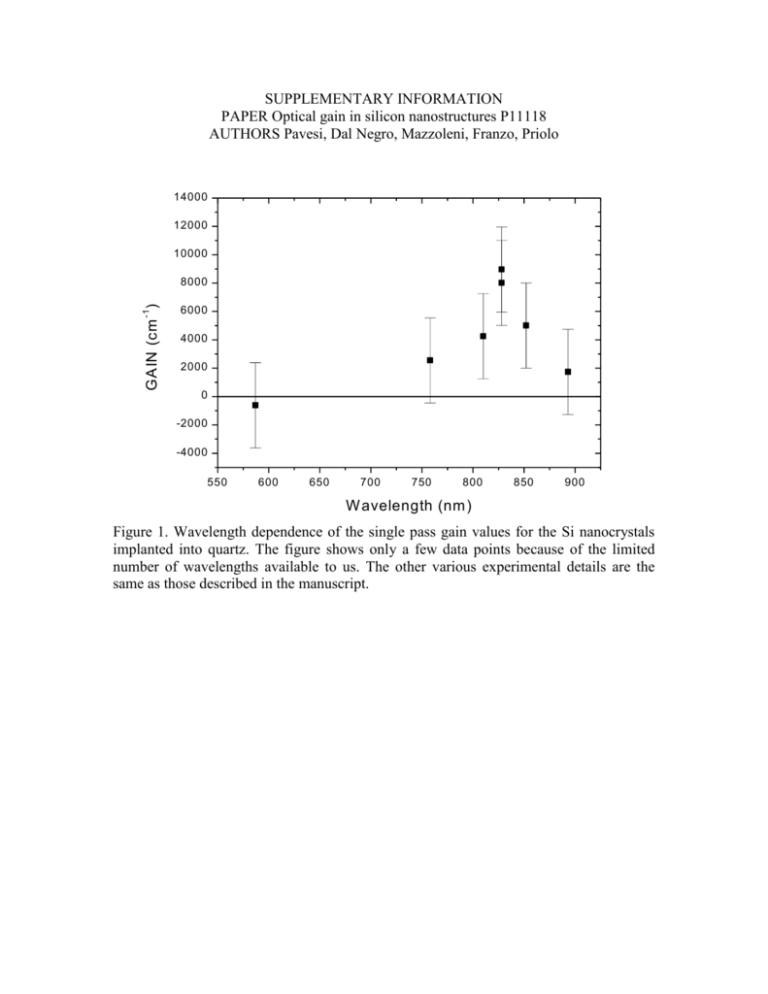
SUPPLEMENTARY INFORMATION PAPER Optical gain in silicon nanostructures P11118 AUTHORS Pavesi, Dal Negro, Mazzoleni, Franzo, Priolo 14000 12000 10000 -1 GAIN (cm ) 8000 6000 4000 2000 0 -2000 -4000 550 600 650 700 750 800 850 900 W avelength (nm) Figure 1. Wavelength dependence of the single pass gain values for the Si nanocrystals implanted into quartz. The figure shows only a few data points because of the limited number of wavelengths available to us. The other various experimental details are the same as those described in the manuscript. 120 80 -1 Gain (cm ) 40 0 -40 -80 -120 -160 fit to eq. (1-paper) with eq. (1-letter) -200 450 500 550 600 650 700 750 800 850 900 950 Wavelength (nm) . Figure 2: (full line) Spectral dependence of the net modal gain derived by using, 1 I g ln 2 L 1 (1) L IL where all the symbols have the same meanings as in Ref. [J. D. Thomson et al. Applied Physics Letters 75 (1999) 2527]. The points refer to the data shown in Fig. 3 of the paper obtained by fitting the ASE data. 2.0 SiO2/NS(n=1.89)/SiO2/air waveguide =0.097 SiO2/NS(n=1.71)/SiO2/air waveguide =0.017 1.8 1.4 1.2 1.0 0.8 refractive index Electric field (TE0) 1.6 0.6 0.4 0.2 0.0 -3.0 -2.0 -1.0 0.0 1.0 depth (m) Figure 3: Electric field profile for the fundamental TE mode of a four layers waveguide at a wavelength of 0.8 μm. The waveguide was formed by a 0.1 μm thick NS layer on top of a quartz substrate and capped by a 0.06 μm thick SiO2 layer. The external medium was air. The effective refractive index of the NS implanted region, for the full line plot, was M eff M f estimated by using the Maxwell Garnett approximation , which eff 2 M f 2 M is valid for spherical particles of dielectric constant (here we use =15.21 as for Si) embedded in a medium of dielectric constant M (here we use M =2.102 as for SiO2) with a volumetric fraction f=0.28 (corresponding to Si nanocrystals with a diameter of 3 nm and a density of 2x1019 cm-3) and yielded an effective dielectric constant eff =3.57. Then n eff =1.89. For the dotted line, we used an effective refractive index for the NS layer of 1.71 which was measured by ellipsometry on PE-CVD deposited NS. The profile of the refractive indexes of the two resulting structures is also shown. The optical filling factor of the mode is defined as .
